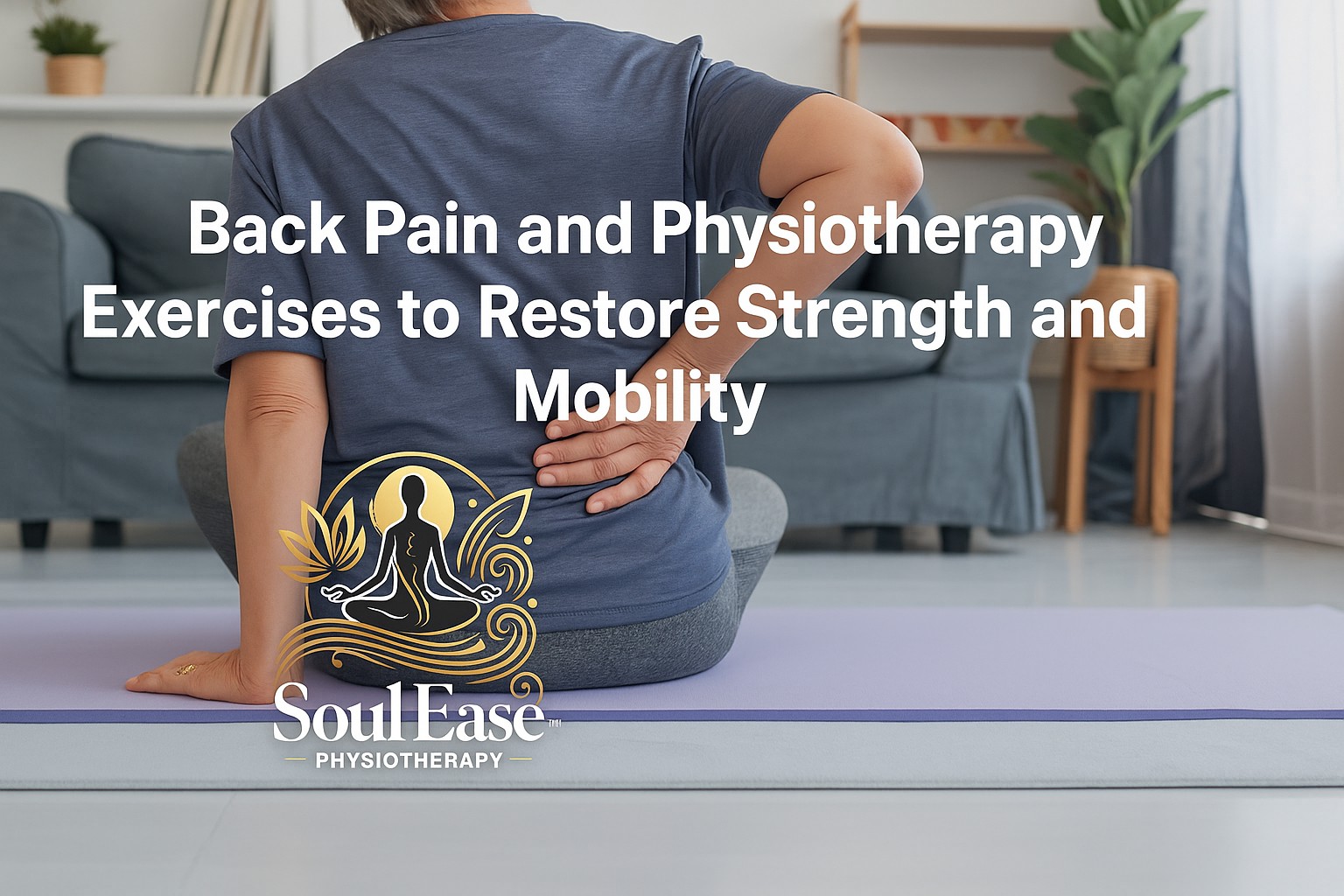Home » Back Pain and Physiotherapy Exercises to Restore Strength and Mobility

Back pain is one of the most common health issues worldwide, affecting people of all ages. Whether it comes from poor posture, injury, or long hours at a desk, back pain can severely limit mobility and reduce quality of life. Physiotherapy provides a safe and natural approach to recovery, helping you restore strength and move with confidence again. Through specific exercises and lifestyle adjustments, physiotherapy not only eases pain but also strengthens your back, helping you avoid future problems.
Back pain can result from muscle strain, slipped discs, arthritis, or injuries. Sedentary lifestyles and bad posture are also leading factors in modern life.
Instead of simply hiding discomfort like painkillers do, physiotherapy works to fix the actual problem. It focuses on strengthening the muscles, improving flexibility, and correcting posture—delivering long-term relief and restoring mobility.
Your physiotherapist begins with a complete evaluation of your posture, movement, and muscle condition. This ensures every exercise routine is personally tailored to fit your specific needs and condition.
A well-conditioned core helps ease the load and pressure on the spine. Exercises like planks and dead bugs provide stability, helping to prevent recurring pain.
Positioning your screen so it’s level with your eyes can ease the pressure on your neck and encourage a more natural, comfortable posture throughout the day.
Keeping a balanced weight lowers the stress on your back. Light activities such as walking, yoga, and swimming are excellent for maintaining spinal health. Stress relief methods like deep breathing and meditation also reduce muscle tension.
If your back pain is severe, lasts for a long time, or comes with symptoms like numbness or weakness, it’s important to seek professional help. Neglecting these warning signals may result in long-term back complications.
Healing is gradual. Consistency in exercises ensures stronger recovery, reduces the chance of relapse, and builds resilience over time.
Use cold packs for sudden injuries and warmth for ongoing pain relief.
“To avoid straining your back while lifting, bend at your knees and keep your spine straight—let your legs do the heavy work, not your waist.”
Pay attention to your body’s signals and increase intensity step by step.
Many patients not only recover from pain but also enjoy improved posture, stronger mobility, and greater confidence in everyday movements. Physiotherapy builds gradual yet long-lasting transformation.
Back pain doesn’t have to control your life. By adopting physiotherapy and tailored exercises, you can restore strength, flexibility, and confidence in movement. The secret lies in consistency, good posture, and healthy habits.
Many people begin to feel noticeable relief after just 2 to 4 weeks of consistent physiotherapy sessions.
Yes, especially when paired with lifestyle changes, physiotherapy can dramatically reduce or eliminate discomfort.
Yes, but always follow guidance from a physiotherapist to avoid mistakes.
A mix of stretching, strengthening, and mobility workouts offers the best results.
Yes, continuous slouching places harmful pressure on the spine over time.